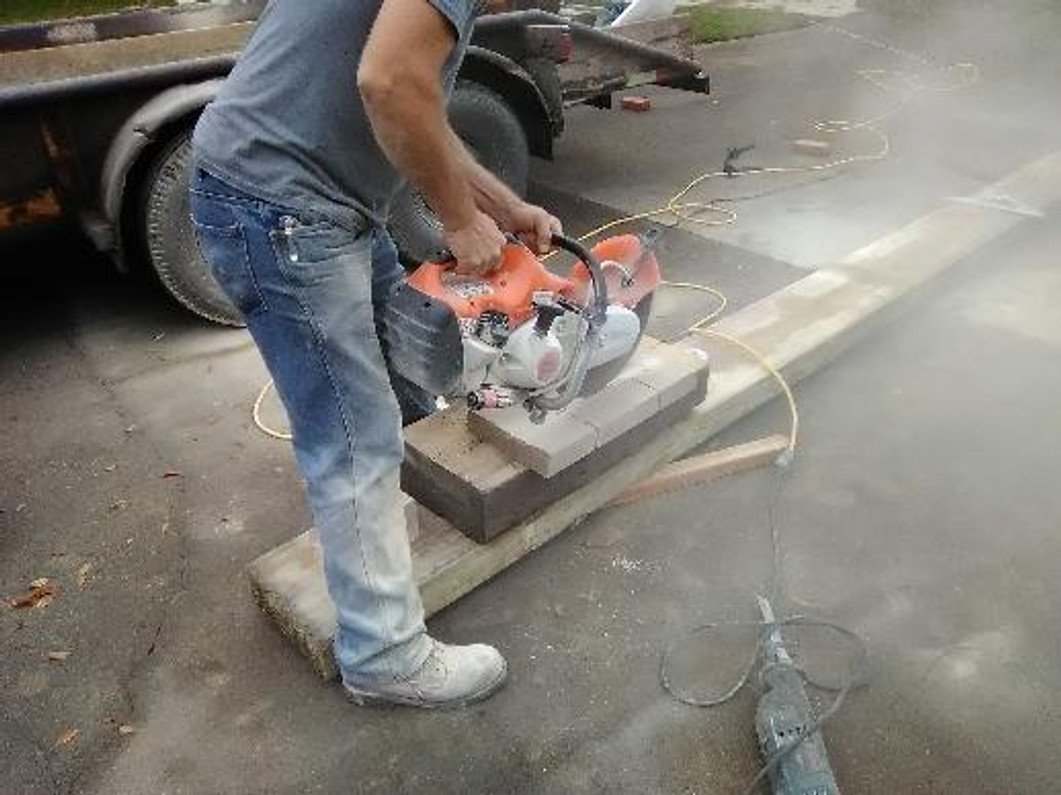Cutting Brick, Block, and Stone: Blade Types Explained
When it comes to masonry, cutting through tough materials like brick, block, and stone isn’t just about brute force—it’s about using the right blade for the job. Whether you're tackling a small project or working on a major construction site, choosing the proper blade ensures clean cuts, extends the life of your tools, and keeps the work moving efficiently.
Here’s a breakdown of the most common blade types used in masonry and what they’re best suited for:
1. Diamond Blades
Best for: Brick, concrete, stone, block, tile, and more.
Diamond blades are the go-to for masonry work because they’re built to handle hard, abrasive materials. The blade’s edge is embedded with synthetic diamonds that grind through the material instead of tearing it, allowing for smoother, cleaner cuts.
Types of diamond blades:
-
Segmented Rim: Ideal for dry cutting and fast work. These have notched edges to allow air flow and cooling but tend to produce rougher cuts.
-
Turbo Rim: Combines speed and smoother finishes, often used for cutting concrete and stone.
-
Continuous Rim: Best for wet cutting, providing clean, precise cuts—great for tile and delicate materials.
Pro Tip: Use water when possible to cool the blade and reduce dust.
2. Carbide-Tipped Blades
Best for: Softer masonry materials, fiber cement, and light block.
These blades have carbide teeth instead of diamond edges. They’re more common in circular saws and are typically used for materials that don’t require heavy-duty grinding.
Keep in mind: They can wear down quickly on harder materials and aren't ideal for prolonged use on brick or stone.
3. Abrasive Blades
Best for: Occasional cutting of brick, block, and concrete.
Made from bonded abrasive materials, these are a budget-friendly option for short-term or infrequent projects. They're often used with handheld grinders or chop saws.
The downside: They wear out quickly and produce a lot of dust and heat. Not great for precision work or long-term use.
4. Masonry Saw Blades (for Specific Saws)
Many masonry saws—like walk-behind saws, tile saws, and cutoff saws—use specialized blades. It’s important to match the blade type not only to the material but also to the saw itself. Using the wrong size or arbor type can damage the tool or reduce performance.
Check compatibility with the saw’s speed (RPM rating) and blade diameter before cutting.
Choosing the Right Blade: Quick Guide
| Material | Best Blade Type | Wet or Dry? |
|---|---|---|
| Brick | Diamond Segmented or Turbo | Dry or Wet |
| Concrete Block | Diamond Segmented | Dry |
| Stone | Diamond Turbo or Continuous | Wet preferred |
| Tile | Diamond Continuous | Wet |
| Soft Block | Carbide or Abrasive | Dry |
Safety First
-
Always wear proper PPE: eye protection, dust mask, gloves, and hearing protection.
-
Let the blade do the work—don’t force it.
-
Inspect blades for cracks, warping, or excessive wear before use.
-
Use water when possible to control dust and heat buildup.
Final Thoughts
When cutting brick, block, or stone, the blade you choose makes all the difference. Investing in the right blade saves time, protects your tools, and helps you get the job done right the first time. At Southwest Scaffolding, we not only provide top-tier scaffolding systems—we also carry a wide selection of masonry tools and accessories to support your entire project.
Need help choosing the right blade? Contact us—we’re here to help.
Recent Posts
-
Building a Mobile Workstation with Rolling Towers
In fast-paced construction environments, efficiency is everything. Workers need access, mobility, an …Nov 17th 2025 -
Elevating History: How Scaffolding Played a Major Role in Restoring a 116-Year-Old East Texas Landmark
Scaffolding: The Backbone of a Safe Restoration When you’re restoring a 116-year-old structure, acce …Nov 14th 2025 -
How to Create an OSHA-Compliant Jobsite with Southwest Scaffolding Gear
Why OSHA Compliance Matters Every safe, efficient jobsite starts with one goal: keeping everyone sta …Nov 6th 2025




